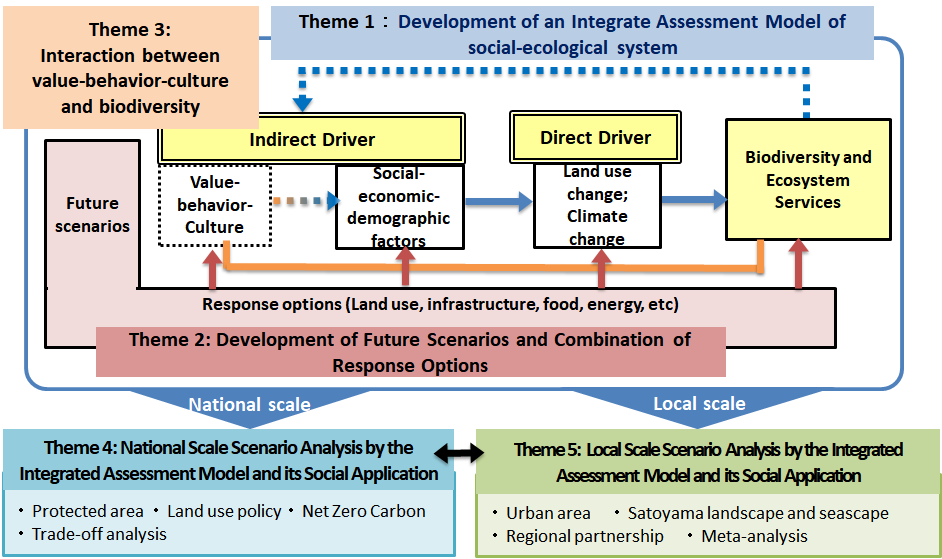環境研究総合推進費 戦略的研究開発課題(S-21)
環境研究総合推進費 戦略的研究開発課題(S-21)
This research project (S-21) was launched as a successor project to S-15 “Predicting and Assessing Natural Capital and Ecosystem Services through an Integrated Social-Ecological Systems Approach” (PANCES) (P. I.: Kazuhiko Takeuchi), which was implemented over a five-year period from FY2016 to FY2020. S-15 consisted of four themes and a total of 15 sub-themes by focusing on both a nationwide scale study and case study sites (Noto/Sado, Akkeshi-cho, Okinawa), producing many novel and useful research results. In this sense, S-21 aims to further develop and enhance the research results obtained with S-15.
The Kunming-Montreal Global Biodiversity Framework (GBF), which was adopted at the 15th Conference of the Parties to the Convention on Biological Diversity in December 2022, and based on the GBF, Japan’s National Biodiversity Strategy and Action Plan 2023 (NBSAP 2023) was approved by the Cabinet on March 31, 2023. The NBSAP 2023 clearly states that “Nature Positive” should be realized by 2030. However, there are many challenges in realizing nature positive society and applying the 23 targets of GBF at the national and local levels, as well as in the private sector. Through the research in S-21, we would like to contribute to the review of future national and local biodiversity strategies and action plans and to nature-related financial disclosures (TNFD) by the private sector. In addition, we would like to actively disseminate research outputs to society throughout the research period, and at the same time, implement research in an interactive style that is open and flexible to new research needs of various stakeholders as well as governments.
Osamu Saito
Institute for Global Environmental Strategies
The objective of this study is to develop an integrated assessment model which can consider biodiversity, climate change, and other socio-economic drivers in an integrated manner for future scenario analysis, and quantitatively estimate the impacts of response options for climate change mitigation and adaptation, and biodiversity conservation and restoration under different future scenarios in Japan.


